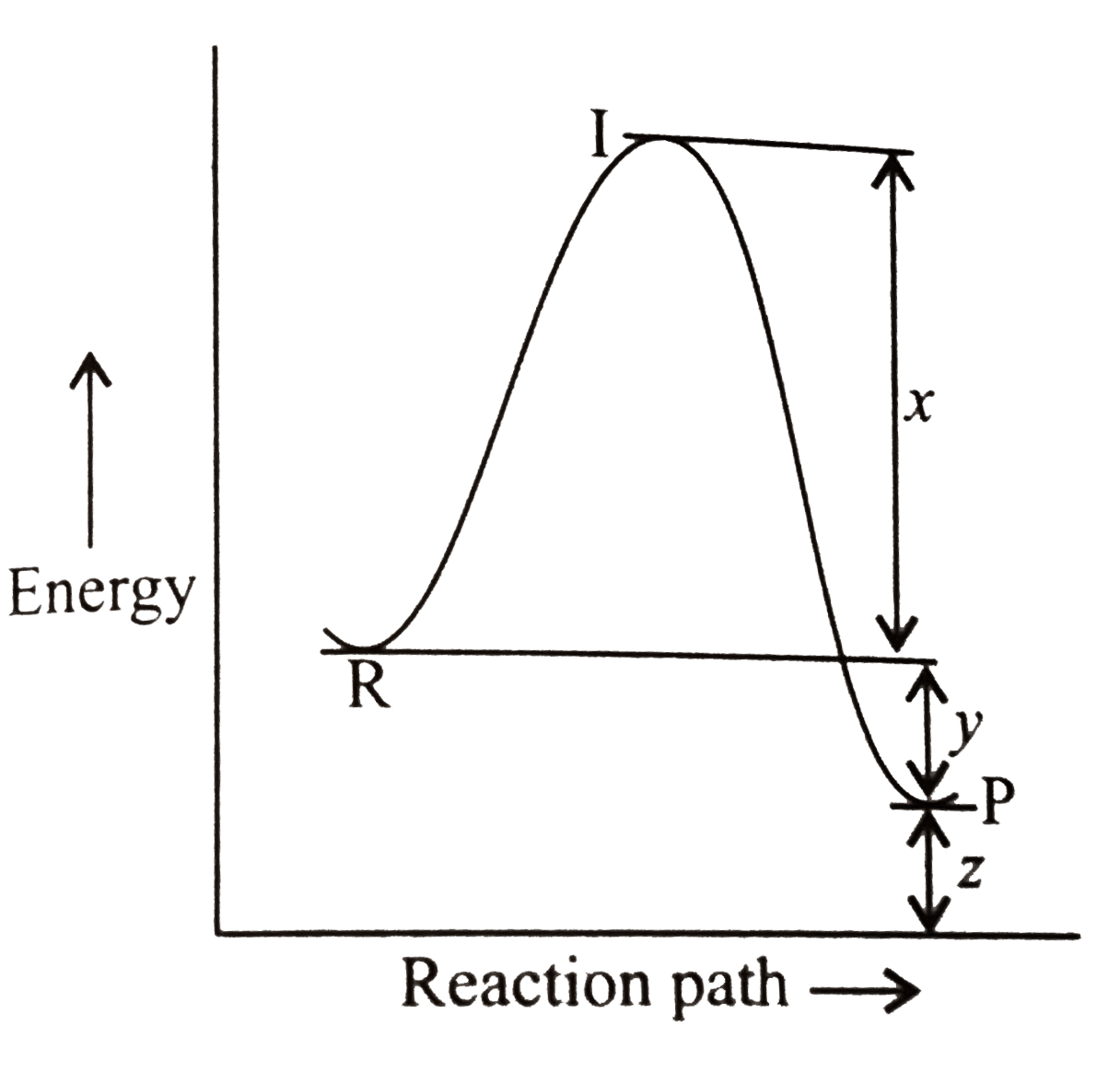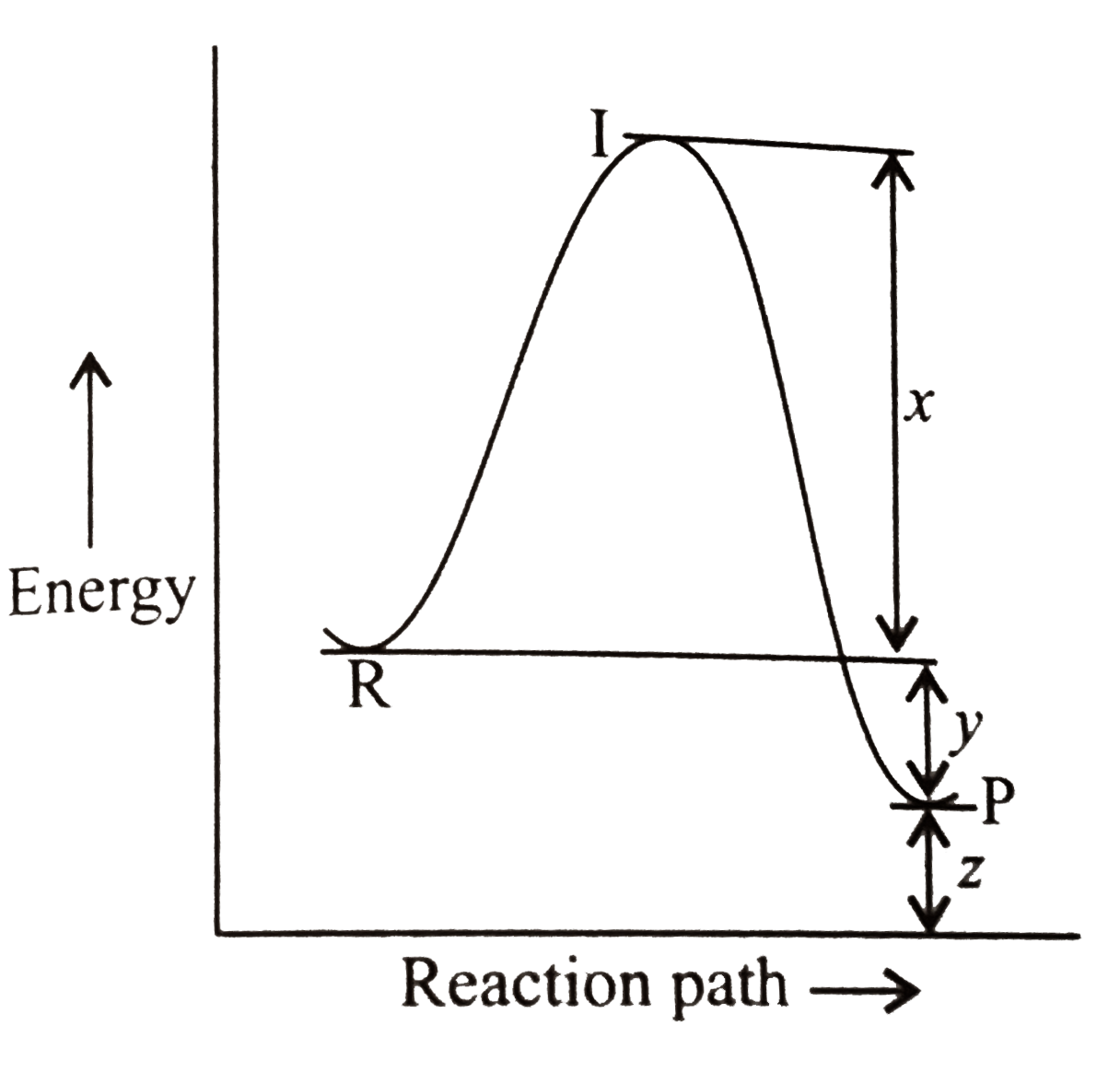Find the rate of law of the given reaction NO2(g)+CO(g)→CO2(g)+NO(g)Solution in Odia
dx/dt=K[NO_(2)]^(2)
Topper's Solved these Questions
- CHEMICAL KINETICSBOOK - MODERN PUBLICATIONCHAPTER - CHEMICAL KINETICSEXERCISE - PROBLEM
40 Videos
- ALDEHYDES, KETONES & CARBOXYLIC ACIDSBOOK - MODERN PUBLICATIONCHAPTER - ALDEHYDES, KETONES & CARBOXYLIC ACIDSEXERCISE - EXCERCISE
343 Videos
- CHEMISTRY IN EVERYDAY LIFEBOOK - MODERN PUBLICATIONCHAPTER - CHEMISTRY IN EVERYDAY LIFEEXERCISE - EXCERCISE
210 Videos
Similar Questions
Calculate the rate constant of a reaction (first order) which is 90% complete in 10 min.
View SolutionOne mole of an organic compound requires 0.5 mole of oxygen to produce an acid.The compound may be:
View SolutionMorphine is a
View SolutionThe energy profile diagram for the reaction:
CO(g)+NO2(g)⇔CO2(g)+NO(g) is given below:

The activation energy of the forward reaction is
View SolutionThe energy profile diagram for the reaction:
CO(g)+NO2(g)⇔CO2(g)+NO(g) is given below:

The activation energy of the backward reaction is
View SolutionThe energy profile diagram for the reaction: CO(g)+NO_(2)(g) hArr CO_(2)(g)+NO(g) is given below: the heat of the reaction is
View SolutionThe energy profile diagram for the reaction: CO(g)+NO_(2)(g) hArr CO_(2)(g)+NO(g) is given below: The threshold energy of the reaction is
View SolutionFor the reaction NO2(g)+CO(g)→NO(g)+CO2(g), the experimentally determined rate expression at 40 K is:
rate =k[NO2]2
What is the proposed mechanism for the reaction?
View SolutionFor a reaction carried at 400 K, NO_(2)(g) + CO_(2)(g) to CO_(2)(g) + NO_(2)(g) , the proposed mechanism is as follows: NO_(2) + NO_(2) overset("Slow")to NO + NO_(3) NO_(3) + CO overset("Fast")to CO_(2) + NO_(2) What is the rate law for the reaction?
View SolutionWhat is the rate law for the reaction, NO_(2(g)) + CO_((g)) to NO_((g)) + CO_(2(g)) The reaction occurs in the following steps : (i) NO_(2) + NO_(2) to NO_(3) + NO (Slow) (ii) NO_(3) + CO to NO_(2) + O_(2) (fast) What is the role of NO_(3) ?
View SolutionWhat is the rate law for the reaction. NO_(2_((g)))+CO_((g)) to NO_((g))+CO_(2_((g))) The reaction occurs in the following steps: (i) NO_(2)+NO_(2) to NO_(3)+NO("slow") (ii) NO_(3)+CO to NO_(2)+CO_(2)("fast") What is the role of NO_(3) ?
View SolutionThe reaction of nitrogen dioxide with carbon monoxide NO_(2)(g) +CO(g) rarr CO_(2)(g)+NO(g) has been studied and the following mechanism mechanism has been proposed: NO_(2)(g) + NO_(2)(g) rarr NO_(3)(g) +NO(g) " " (slow) NO_(3)(g) +CO(g) rarr NO_(2)(g)+CO_(2)(g)" " (fast) What rate law corresponding to this mechanism?
View SolutionIn which of the following reactions, reaction-rate is same irrespective of whether the rate is expressed in terms reactant or product ? (i) NO_(2)(g)+CO(g)rarrNO(g)+CO_(2)(g) (ii) NO_(2)(g)+3H_(2)(g)rarr2NH_(3)(g)
View Solution(a)Write the order of following reactions
NO2(g)+CO(g)→NO(g)+CO2(g)
rate =k[NO2]2[CO]0
(b) Write the order of following reactions
aA+bB→ cC+dD
rate =k[A]x[B]y]
View SolutionFor the reaction at 500 K NO_(2)(g)+CO(g) to CO_(2)(g)+NO(g) The proposed mechanism is as follows: (i) NO_(2)+NO_(2) to NO+NO_(3) (slow) (ii) NO_(3)+CO to CO_(2)+NO_(2) (fast) What is the rate law for the reaction?
View SolutionA reaction occurs in the following steps: NO_(2(g))+F_(2(g)) rarr NO_2F_(g)+ F_(g) F_(g) + NO_(2(g)) rarr NO_2F_(g) Write rate law.
View Solution
